 |
 |
 |
| |
Biological Determinants of Immune Reconstitution following Long-term HAART: host factors & persistent gut microbial translocation drive chronic immune activation
|
| |
| |
Reported by Jules Levin
CROI 2009
Reena Rajasuriar*1,2, G Jones3, A Solomon1, K Chua4, T Spelman5, S Crowe4,5, D Booth3, G Stewart3, P Cameron1,4, and S Lewin1,4
1Monash Univ, Melbourne, Australia; 2Univ of Malaya, Kuala Lumpur, Malaysia; 3Westmead Millennium Inst, Sydney, Australia; 4Alfred Hosp, Melbourne, Australia; and 5Macfarlane Burnet Inst, Melbourne, Australia
Background: Multiple host factors may influence CD4 T-cell recovery in the setting of viral suppression on HAART. Interleukin-7 receptor alpha (IL7Rα) polymorphisms alter the production of soluble IL7Rα with potential influence on T-cell homeostasis. In addition, persistent gut microbial translocation may drive chronic immune activation leading to increased T-cell turnover, apoptosis and impaired recovery. We therefore explored the role of IL7Rα polymorphisms, microbial translocation and immune activation on long-term immune recovery following suppressive HAART.
Methods:Patients were recruited with the following inclusion criteria: HAART initiated when CD4 T-cell counts were <500 cells/ul, aviremia within 6 months and no immunomodulatory therapy (n=96). All patients were genotyped for 3 IL7Rα haplotype tagging single nucleotide polymorphisms (rs7718919, rs11567685 and rs11567686). Lipopolysaccharide (LPS) and sCD14 levels were measured in pre and post-HAART plasma samples. The kinetics of LPS and sCD14 levels were also measured at yearly interval for 11 years starting from treatment initiation (n=30; 219 time points) using generalized estimating equations. The Cox proportional hazards model was used to identify determinants of long-term immune reconstitution (event defined as time taken to achieve CD4 T-cell counts >500cells/ul).
Results: The median follow-up was 4 years (IQR 3-7) and baseline CD4 T-cell count was 199 cells/ul (IQR 92-304). Pre-HAART LPS and sCD14 levels was significantly higher than post-HAART levels (p<0.001 respectively). LPS levels were also correlated with sCD14 (r= 0.381, p<0.001). LPS levels significantly decreased within 12 months of treatment while sCD14 showed a biphasic decline at 6 and 48 months. In a multivariate analysis, faster CD4 recovery (CD4>500 cells/ul) was independently predicted by higher baseline CD4 T-cell count (HR 1.007, 95%CI 1.005-1.008, p<0.001) and the low soluble IL7Rα producing haplotype GTA (HR 1.6, 95%CI 1.10-2.33, p=0.019).
Conclusion: Besides the established clinical marker of baseline CD4 T-cell count, the IL7Rα haplotype GTA was associated with enhanced CD4 T-cell recovery and may potentially be used as a prognostic marker to guide the optimal time for treatment initiation.
INTRODUCTION
1. CD4 T-cell reconstitution in the setting of viral suppression is highly variable.
2. IL7Rα polymorphisms have been described to alter the soluble/membrane receptor expression ratio on T-cells and this may potentially impair T-cell reconstitution (Figure 1).
3. Following long-term suppressive HAART, gut microbial translocation may persist and impair immune recovery.
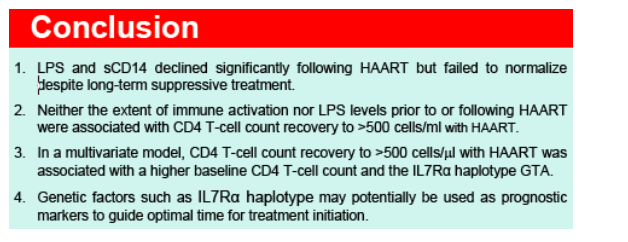
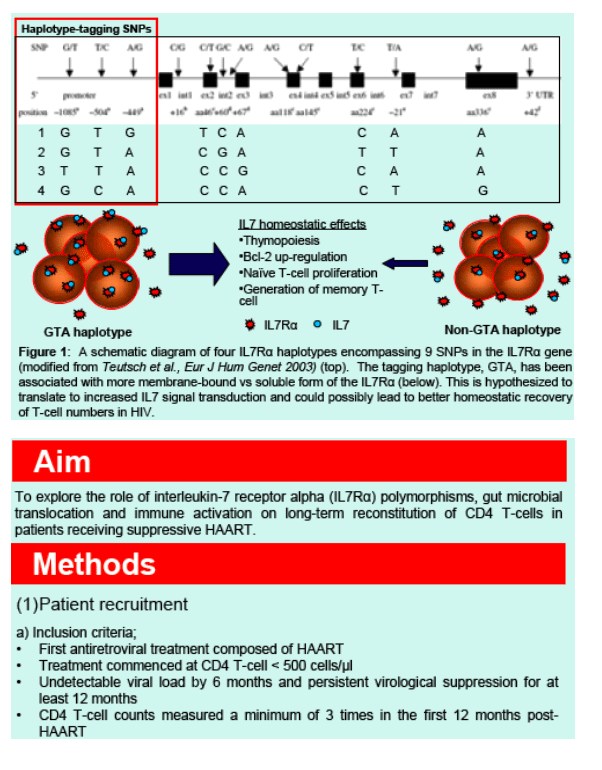
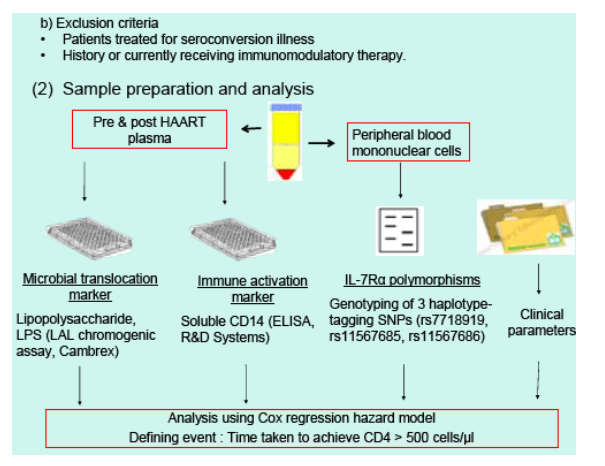
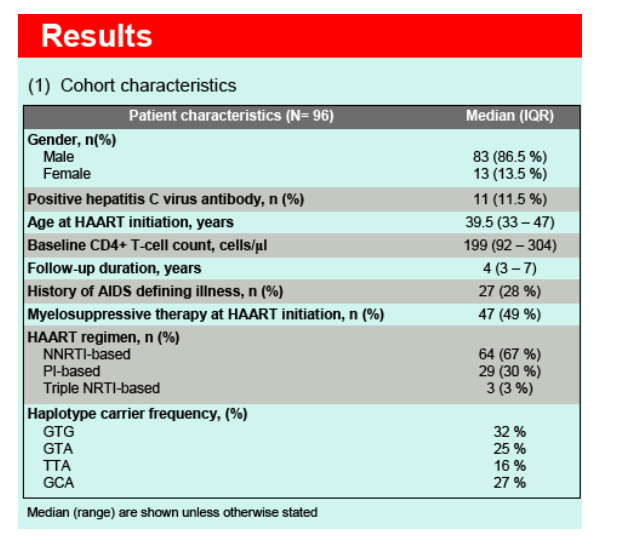
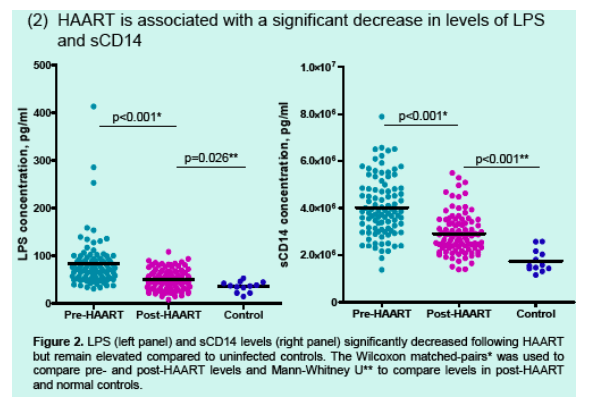
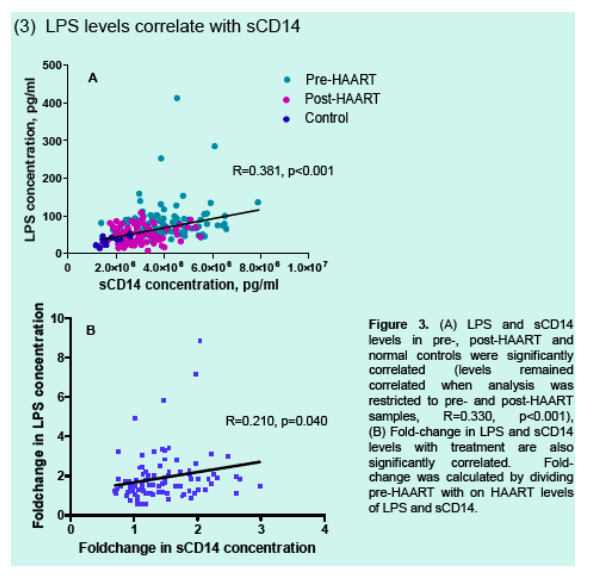
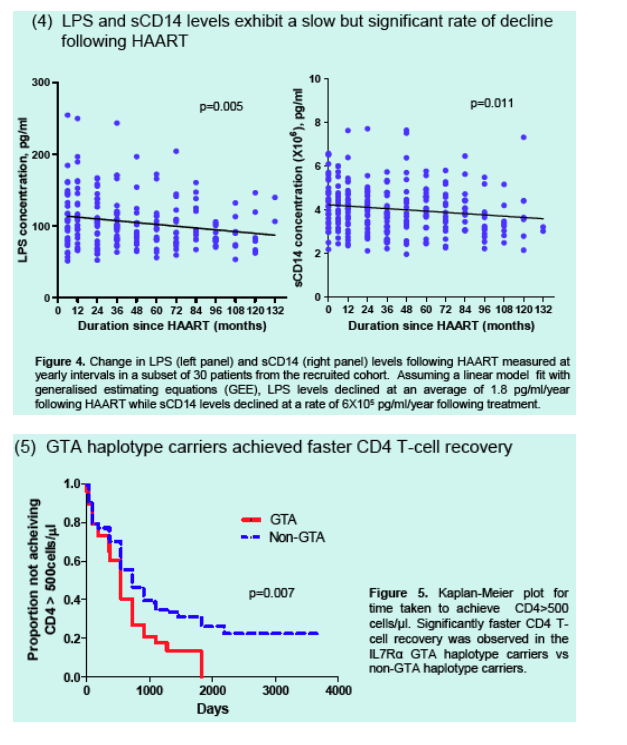
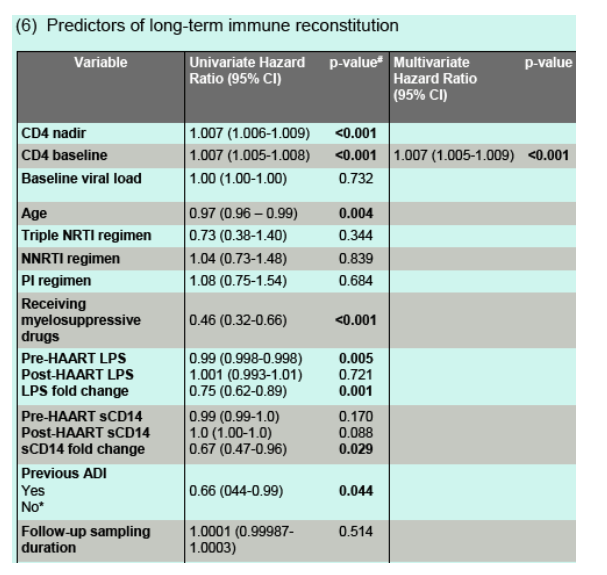
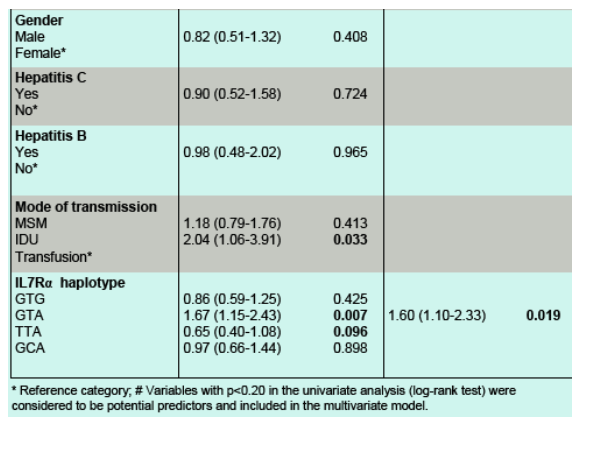
|
| |
|
 |
 |
|
|